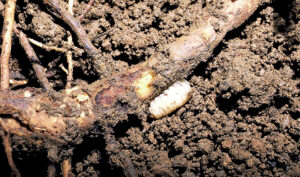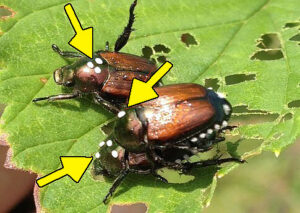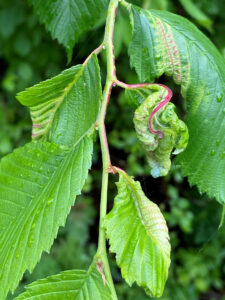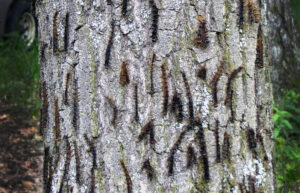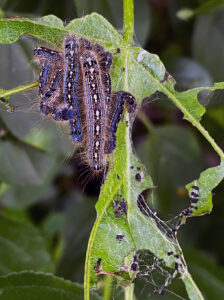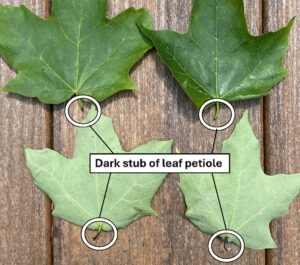
Prematurely fallen sugar maple leaves with normal appearance except for characteristic darkened petiole stubs caused from feeding damage of the maple petiole borer. / Photo Credit: Paul Cigan, Wisconsin DNR
By Paul Cigan, DNR Forest Health Specialist
Paul.Cigan@wisconsin.gov or 715-416-4920
Fallen maple leaves have been observed under Wisconsin maple trees since late May.
The fallen leaves are typically of normal shape, size and color, but have a darkened petiole stub (i.e., leaf stem) remaining. A closer examination of the petiole may reveal a hollow feeding tunnel containing tiny larvae of the insect responsible for the damage inside: the maple petiole borer.
Continue reading “Maple Petiole Borer Sawfly Causing Leaf Drop”

